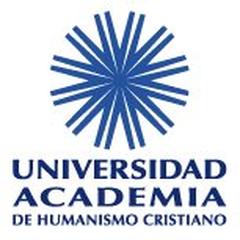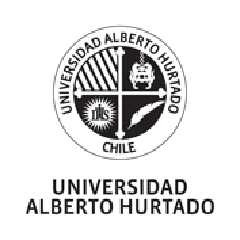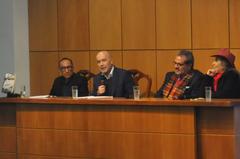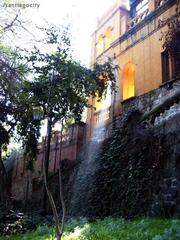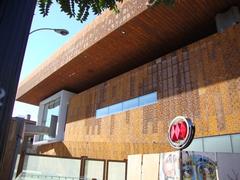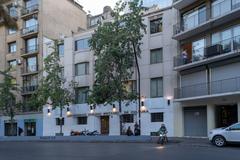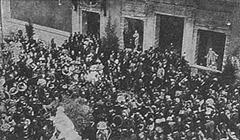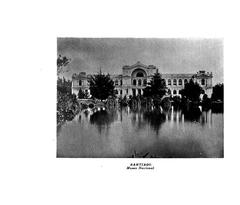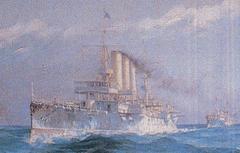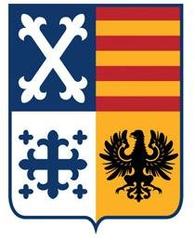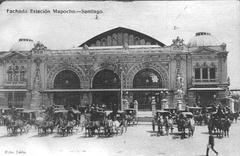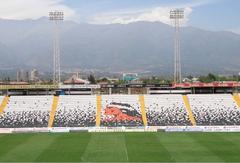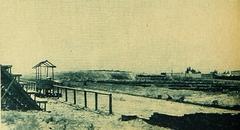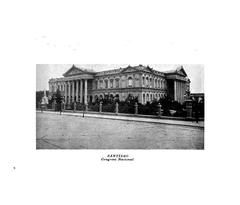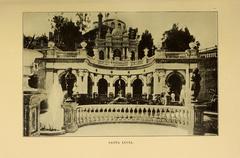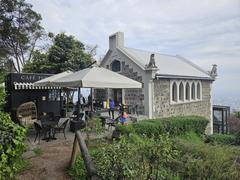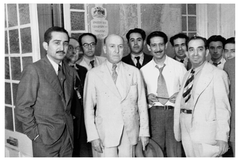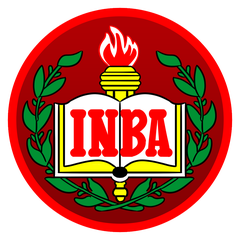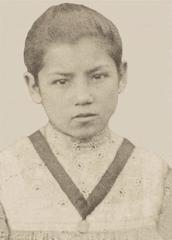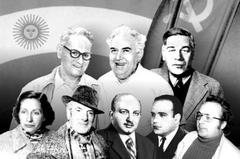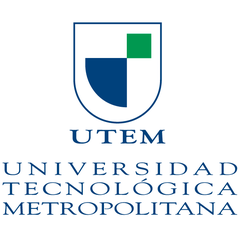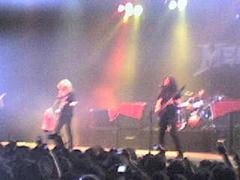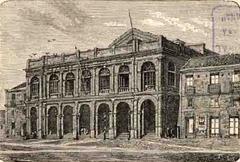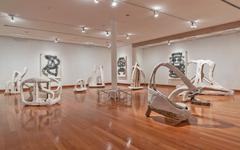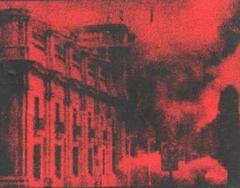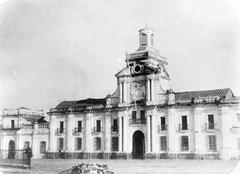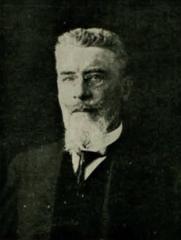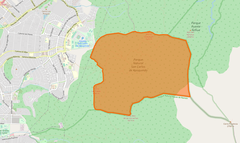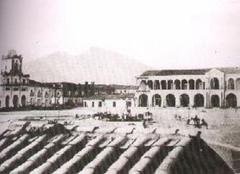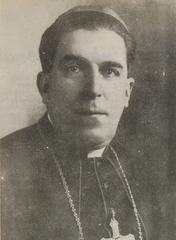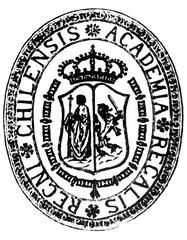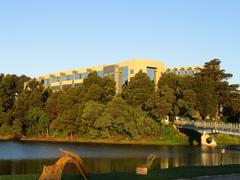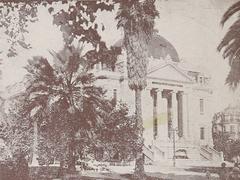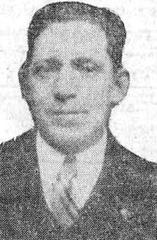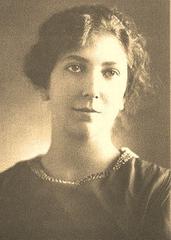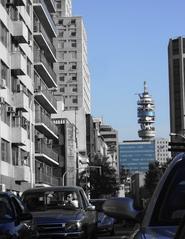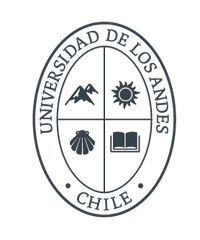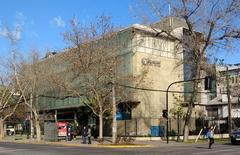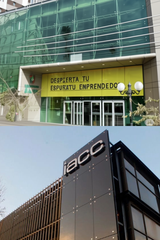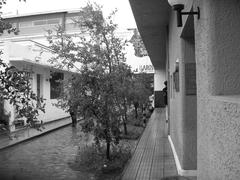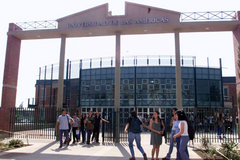Visiting Salvador Allende Gossens in Santiago, Chile: A Comprehensive Guide
Date: 25/07/2024
Why Visit Salvador Allende Gossens?
Salvador Allende Gossens remains one of the most influential figures in Chilean and Latin American history. Born on July 26, 1908, in Valparaíso, Chile, Allende’s early life and education laid the foundation for his future political career. He co-founded the Socialist Party of Chile in 1933 and eventually became the first Marxist to be elected president in a liberal democracy in Latin America (Encyclopedia). His presidency, which began in 1970, was marked by ambitious social reforms aimed at improving the lives of the poor and redistributing wealth, but it also faced significant challenges from both domestic opposition and foreign intervention (Oxford Research Encyclopedias). On September 11, 1973, a military coup led by General Augusto Pinochet ended Allende’s presidency and resulted in his tragic death, marking the beginning of a 17-year-long dictatorship characterized by severe human rights abuses (ThoughtCo).
Today, Santiago, Chile, offers a variety of historical sites and memorials that honor Allende’s legacy. Visitors can explore places such as the Museo de la Solidaridad Salvador Allende, La Moneda Palace, and the Cementerio General, among others. These sites provide a deeper understanding of Allende’s impact on Chilean history and the enduring significance of his principles and vision. This guide aims to help travelers navigate these important landmarks, offering comprehensive visitor information, historical context, and travel tips.
Contents Overview
- Exploring the Legacy of Salvador Allende
- Historical Background
- Early Life and Education
- Political Beginnings
- Legislative Career
- Presidency and Policies
- Challenges and Opposition
- The 1973 Coup and Allende’s Death
- Legacy and Memorials
- Monument to Salvador Allende
- Museo de la Solidaridad Salvador Allende
- La Moneda Palace
- Cementerio General
- Plaza de Armas
- Barrio Bellavista
- Museum of Memory and Human Rights
- Visiting Historical Sites Related to Allende
- Museo de la Solidaridad Salvador Allende
- La Moneda Palace
- Cementerio General
- Additional Information
- Travel Tips
- Nearby Attractions
- Accessibility
- Photography
- Frequently Asked Questions (FAQ)
- Conclusion
Exploring the Legacy of Salvador Allende
Historical Background
Early Life and Education
Salvador Guillermo Allende Gossens was born on July 26, 1908, in Valparaíso, Chile, to an upper-middle-class family with a strong tradition in both the medical profession and politics (Encyclopedia). His father, Salvador Allende Castro, and his mother, Laura Gossens Uribe, were of Belgian and Basque descent. Allende attended high school at the Liceo Eduardo de la Barra in Valparaíso and later pursued a medical degree at the University of Chile, graduating in 1933. His doctoral thesis, “Crime and Mental Hygiene,” critiqued Cesare Lombroso’s theories, showcasing his early inclination towards social issues (Prabook).
Political Beginnings
Allende’s political career began in 1933 when he co-founded the Socialist Party of Chile alongside Colonel Marmaduque Grove, Oscar Schnake, and Carlos Alberto Martinez, among others. He became the party’s first chairman (Prabook). In 1938, he played a pivotal role in the electoral campaign of the Popular Front, which won under the slogan “Bread, a Roof, and Work.” Subsequently, he was appointed as the Minister of Health in President Pedro Aguirre Cerda’s reformist government. During his tenure, Allende implemented several social reforms, including higher pensions for widows, free school lunch programs, maternity care, and safety laws for factory workers (Encyclopedia).
Legislative Career
Allende’s legislative career was marked by his election to the lower house of Congress in 1937 and the Senate in 1945. He served as a senator for several provinces until 1969, during which he introduced legislation to establish the Chilean National Health Service (Oxford Research Encyclopedias). His commitment to improving the lives of Chile’s poor, workers, peasants, and women was evident in his legislative efforts. He ran for the presidency four times (1952, 1958, 1964, and 1970), always leading a coalition of left-wing parties (Encyclopedia).
Presidency and Policies
Allende was elected President of Chile in 1970, becoming the first Marxist to be elected president in a liberal democracy in Latin America (Wikipedia). His presidency was characterized by his commitment to socialism within a constitutional framework. Allende aimed to improve the conditions of the country’s poor, ensure Chilean ownership of its natural resources, and deepen popular democracy and worker control of industry (Oxford Research Encyclopedias). His government nationalized major industries, including copper mining, and implemented agrarian reforms to redistribute land to peasants.
Challenges and Opposition
Allende’s presidency faced significant challenges from conservative opposition, conflicts within his governing coalition, and the antagonism of the Nixon Administration in the United States. The economic policies led to inflation and shortages, which fueled social unrest. The conservative opposition, backed by the U.S., sought to destabilize his government through economic pressure and covert operations (Oxford Research Encyclopedias).
The 1973 Coup and Allende’s Death
On September 11, 1973, a military coup led by General Augusto Pinochet ousted Allende from power. Despite being offered the opportunity to negotiate with the coup plotters and go into exile, Allende chose to remain in La Moneda Palace. He refused to surrender and ultimately took his own life as military forces bombed the palace (Encyclopedia). His death marked the beginning of a 17-year-long military dictatorship in Chile.
Legacy and Memorials
Salvador Allende’s legacy is complex and multifaceted. He is remembered as a martyr for his unwavering commitment to his principles and his dedication to improving the lives of Chile’s working class. His efforts to unite socialism, anti-imperialism, nationalism, and democracy in Chile have made him a subject of fascination and admiration worldwide (Oxford Research Encyclopedias). In Chile, his statue stands near La Moneda Palace, and numerous streets, plazas, health centers, and libraries bear his name. In 2008, Chileans named him the most important figure in their country’s history (Oxford Research Encyclopedias).
Visiting Historical Sites Related to Allende
Museo de La Solidaridad Salvador Allende
Located in the Republica neighborhood, this museum houses a collection of contemporary art donated by artists worldwide in solidarity with Allende’s government (SantiagoChile).
- Visiting Hours: Tuesday to Sunday, 10:00 AM - 6:00 PM
- Tickets: General admission CLP 2,000; Students and seniors CLP 1,000
La Moneda Palace
The presidential palace where Allende spent his final moments. Guided tours are available, offering insights into Chilean history and the 1973 coup (Worldly Adventurer).
- Visiting Hours: Monday to Friday, 9:00 AM - 6:00 PM
- Tickets: Free admission, but advance booking required
Cementerio General
The General Cemetery in Santiago is the final resting place of Salvador Allende. His mausoleum is one of the most visited sites in the cemetery (Worldly Adventurer).
- Visiting Hours: Daily, 8:30 AM - 5:30 PM
- Tickets: Free admission
Additional Information
- Travel Tips: It’s advisable to use public transport to visit these sites. The Santiago Metro provides easy access, with nearby stations including La Moneda and Republica.
- Nearby Attractions: While in the area, consider visiting other historical sites such as the Plaza de Armas and the National Museum of Fine Arts.
- Accessibility: Most of these sites are wheelchair accessible. It’s recommended to check specific accessibility options in advance.
- Photography: These sites offer several photographic spots. Visitors are encouraged to capture their experience but should be mindful of any restrictions.
Frequently Asked Questions (FAQ)
What are the visiting hours for La Moneda Palace?
- La Moneda Palace is open for guided tours Monday to Friday from 9:00 AM to 6:00 PM. Advance booking is required.
How much does it cost to visit Museo de La Solidaridad Salvador Allende?
- General admission is CLP 2,000, while students and seniors can enter for CLP 1,000.
Are these sites accessible for people with disabilities?
- Yes, most of these sites are wheelchair accessible. It’s advisable to check specific accessibility options in advance.
Conclusion
Salvador Allende’s legacy continues to resonate in Chile and worldwide. Visiting these historical sites in Santiago provides a deeper understanding of his impact on Chilean history. Don’t miss the opportunity to explore these landmarks and reflect on the enduring influence of Allende’s principles and vision. For more updates, download the Audiala app, follow us on social media, and check out other related posts.
Sources and Further Reading
- Encyclopedia, Salvador Allende Gossens Encyclopedia
- Oxford Research Encyclopedias, Salvador Allende Oxford Research Encyclopedias
- ThoughtCo, Salvador Allende ThoughtCo
